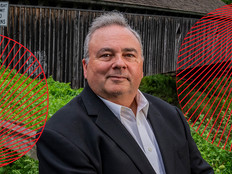Relocating a Data Center
In the Commonwealth of Virginia, our data center represents the flagship of our $1.9 billion public-private partnership with Northrop Grumman.
This summer we opened the doors to the Commonwealth Enterprise Solutions Center (CESC), a data center that will house data and servers for more than 85 state agencies. This facility is located in Chesterfield County. We are also nearing completion on our backup center, the Southwest Enterprise Solutions Center (SWESC) in Russell County. With both of these sites opening in underdeveloped but rapidly growing areas, they represent a nearly $80 million investment in IT infrastructure modernization but also a strong effort to promote technology-based economic development.
As the first state agencies begin the move to the new facilities, it’s a good opportunity to reflect on the steps Virginia took to effectively relocate a data center.
The new centers will offer an unparalleled infrastructure to support innovative applications to help increase productivity and improve constituent services. The CESC offers redundant equipment, multiple power and water sources, and strong perimeter security. It is rated a Tier III data center as defined by the Uptime Institute, a Santa Fe, N.M.-based organization focused on maximizing data center availability; Tier III data centers average only 1.6 hours of disruption per year.
The construction seems fairly simple relative to the operational task of shifting legacy IT systems without sacrificing service to public servants and constituents. Gone are the days where you could close shop on Friday afternoon, unplug everything and move it, then power it up on Monday morning. Citizens must have access to online services 24/7. It is also crucial that Virginia officials have constant access to the critical information needed to keep our citizens safe. Shutting down servers and making important information inaccessible for any length of time is not an option.
The Virginia Information Technologies Agency (VITA) and Northrop Grumman worked with state agencies and others to develop a robust and detailed plan to help create a smooth transition. The most daunting task is coordinating with hundreds of agency mainframe and server customers to understand their business requirements, develop test plans, and implement the cutover. The goal is to mitigate risks for a coordinated, smooth transition and minimal disruption.
- Consolidate first, move later. During the spring, VITA consolidated about 300 servers on the data center floor to 24, and plans a similar approach for the remaining 2,500 servers scattered about the commonwealth.
- Set up a robust, redundant test environment. Allow your customers a wide testing window. Think of it as a disaster recovery exercise, requiring resources and extensive functionality testing. Have scheduled mock cutovers to find the problems before you throw the real switch.
- Don’t move everything all at once. Take your time. Group server moves into phases or waves, building continual improvements into the process.
- Something’s going to break. Know what you’ve got on the floor or in your spare closet. If you have only one, know where you can get another.
- Some equipment is old, but then there’s the legasaur — the legacy machine that, if it were an employee, would be nearing retirement eligibility. Replace old gear.
- People are nervous and excited. Keep them posted and share your plans. Coordinate closely and carefully. Don’t do everything over e-mail. Meet with people. Knock their socks off with a tour of the new facility.
If we follow these principles, I’m confident that we will minimize downtime and successfully move into the next era of computing in Virginia.
CESC By the Numbers
- 192,000 square feet on 28 acres
- 80,000 square feet of office space, seating 550
- 50,000 square feet of data center floor
- Uptime Institute Tier III rating (typically 99.98% availability)
- Designed to operate at 100 watts per square foot of power to the data center when fully loaded
- Three paralleled diesel generators and pads for two more
- 48-inch-high raised floor for cooling system forcing air up through equipment







